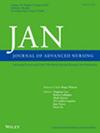视障人士自我服用处方药的经验:一项横断面研究。
IF 3.4
3区 医学
Q1 NURSING
引用次数: 0
摘要
目的探讨视障人士在家中管理他们的处方治疗时所面临的挑战,并确定对所有参与药物管理和患者安全的医疗保健专业人员的影响。设计一项横断面、描述性、观察性研究。方法采用问卷调查的方式,从357名视障人士中收集数据,这些视障人士于2022年10月至2023年6月期间因各种原因访问盲人和视障人士联盟。变量包括人口统计、用药实践和自我报告的药物管理和剂量方面的挑战。使用多变量方差分析(MANOVA)、一系列Kruskal-Wallis检验和R (v. 4.4.3)的事后Dunn检验对数据进行分析。结果受访人员在区分不同类型片剂/胶囊(56%)和不同包装药品(47%)方面面临的主要问题;5%的受访者有时会服用错误的药物,4%有时会服用错误的剂量,11%有时会在错误的时间服药。最常见的问题是使用液体形式的药物。年龄较大的参与者、慢性病患者、多种药物患者、受教育程度较低的参与者或完全失明的参与者报告的困难明显更多。超过一半的受访者表示,他们在识别药物(60%)、剂量(62%)和药物有效期(74%)方面需要帮助。结论视障人士,特别是老年人和有复杂用药方案的视障人士,在安全和独立用药方面面临很大障碍。这些发现突出了个性化支持和实用教育策略的必要性。对专业和/或患者护理的影响通过个性化的方法和实践培训,以及专业间的合作,可以显著提高患者的安全性,降低用药错误的风险。在一个技术进步迅速、医护人员日益短缺的卫生保健系统中,有必要考虑更广泛的支持策略,包括努力了解视力障碍患者的具体需求和使用现有辅助设备。这项研究解决了什么问题?视障者在安全使用处方药物方面面临重大挑战,特别是随着年龄的增长和慢性健康状况的发展。尽管视力障碍在全球越来越普遍,但这一问题在护理文献和实践中仍未得到充分探讨。主要发现是什么?这项研究提供了视力受损的成年人在自我用药时面临的具体挑战的证据。它确定了关键的风险因素,包括高龄、多种药物、慢性疾病和完全失明,并强调了最困难的剂型。重要的是,它还揭示了在药物识别、剂量和监测有效期方面广泛需要帮助。这项研究将对谁和在哪里产生影响?研究结果强调了护士在促进视障患者安全用药管理方面的重要作用。这包括评估药物素养,教育患者和护理人员,以及促进可获取的药物标签。该研究强调需要护士主导的干预措施和政策努力,以减少药物安全方面的差距,同时认识到药剂师和医生在提供全面的跨专业方法方面的宝贵作用。报告方法作者遵循STROBE指南。患者或公众贡献:无患者或公众参与。本文章由计算机程序翻译,如有差异,请以英文原文为准。
Experiences of Visually Impaired Individuals in Self-Administering Prescription Medications: A Cross-Sectional Study.
AIM
To explore the challenges that visually impaired individuals face in managing their prescribed therapy at home, and to identify the implications for all healthcare professionals involved in medication management and patient safety.
DESIGN
A cross-sectional, descriptive, observational study.
METHODS
Data were collected from 357 visually impaired adults recruited at the premises of the Union of the Blind and Visually Impaired during their visits for various reasons between October 2022 and June 2023, using an interviewer-administered questionnaire. Variables included demographics, medication practices, and self-reported challenges in medication administration and dosing. Data were analysed using multivariate analysis of variance (MANOVA), a series of Kruskal-Wallis tests, and post hoc Dunn's tests in R (v. 4.4.3).
RESULTS
Respondents faced major problems in differentiating different types of tablets/capsules (56%) and differentiating different packages of drugs (47%); 5% of respondents sometimes take the wrong medicine, 4% sometimes take the wrong dose, and 11% sometimes take medicine at the wrong time. The most frequent problem was applying medications in liquid form. Older participants, those with chronic illness, multiple medications, lower education, or complete blindness reported significantly more difficulties. More than half of the respondents stated that they needed help in recognising drugs (60%), dosing (62%), and the expiration date of the drug (74%).
CONCLUSIONS
Visually impaired individuals, particularly those who are older and have complex medication regimens, face substantial barriers to safe and independent medication use. These findings highlight the need for individualised support and practical education strategies.
IMPLICATIONS FOR PROFESSION AND/OR PATIENT CARE
Through individualised approaches and practical training, with interprofessional collaboration, patient safety can be significantly improved and the risk of medication errors reduced. In a healthcare system with rapid technological advances and a growing shortage of healthcare workers, it is necessary to consider a broader range of support strategies, including efforts to understand the specific needs of people with visual impairments and the use of available assistive devices.
IMPACT
What problem did the study address?: Visually impaired individuals encounter substantial challenges in safely managing their prescribed medications, especially as they age and develop chronic health conditions. Despite the increasing global prevalence of vision impairment, this issue remains underexplored in nursing literature and practice. What were the main findings?: This study presents evidence on the specific challenges that visually impaired adults face when self-administering medications. It identifies key risk factors-including advanced age, polypharmacy, chronic illness, and complete blindness-and highlights the dosage forms that pose the greatest difficulty. Importantly, it also reveals a widespread need for assistance with medication identification, dosing, and monitoring expiration dates. Where and on whom will the research have an impact?: The findings highlight nurses' essential role in facilitating safe medication management for visually impaired patients. This involves assessing medication literacy, educating patients and caregivers, and promoting accessible medication labeling. The study highlights the need for nurse-led interventions and policy efforts to reduce disparities in medication safety, while recognising the valuable roles of both pharmacists and physicians in providing a comprehensive, interprofessional approach.
REPORTING METHOD
The authors adhered to the STROBE guidelines.
PATIENT OR PUBLIC CONTRIBUTION
No patient or public involvement.
求助全文
通过发布文献求助,成功后即可免费获取论文全文。
去求助
来源期刊
CiteScore
6.40
自引率
7.90%
发文量
369
审稿时长
3 months
期刊介绍:
The Journal of Advanced Nursing (JAN) contributes to the advancement of evidence-based nursing, midwifery and healthcare by disseminating high quality research and scholarship of contemporary relevance and with potential to advance knowledge for practice, education, management or policy.
All JAN papers are required to have a sound scientific, evidential, theoretical or philosophical base and to be critical, questioning and scholarly in approach. As an international journal, JAN promotes diversity of research and scholarship in terms of culture, paradigm and healthcare context. For JAN’s worldwide readership, authors are expected to make clear the wider international relevance of their work and to demonstrate sensitivity to cultural considerations and differences.

 求助内容:
求助内容: 应助结果提醒方式:
应助结果提醒方式:


